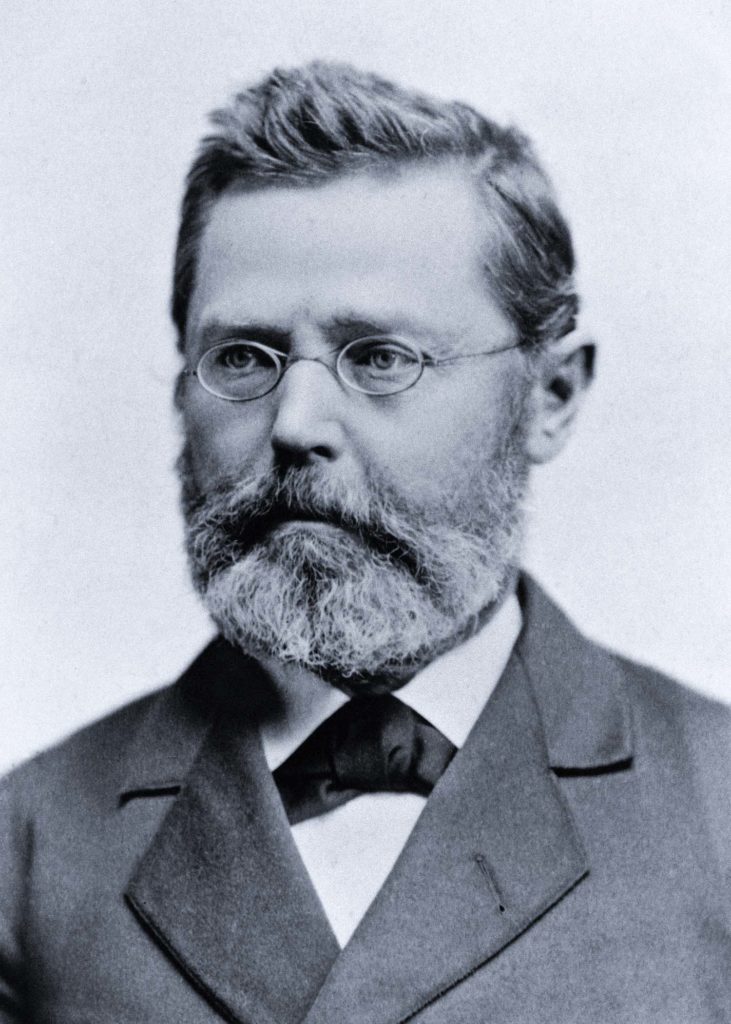As the tale is told by the Grgich family, winemaker Miljenko “Mike” Grgich first gained international recognition at the celebrated “Paris Tasting” of 1976 that put Napa Valley wines on the international map. Then, in a now-historic blind tasting, a panel of eminent French judges chose the 1973 Chateau Montelena Chardonnay, crafted by Mike, as the finest white wine in the world. achievement earned him a reputation as one of the greatest winemakers in the world. Mike went on to found Grgich Hills Estate, a historic Napa Valley winery continuously run by the Grgich family.
In its contemporary era, Grgich Hills Estate continues to add new notches to Napa Valley’s exceptional wine legacy as a landmark Regenerative Organic Certified winery. This important work in vineyard sustainability earned the historic winery the 2024 Great Wines Capitals ‘Best of Wine Tourism’ Award for Sustainable Wine Tourism Practices.
Warren Winiarski
Fate aligned for Warren Winiarski when a bottle of his 1973 S.L.V. Cabernet Sauvignon took first place in that same famous “Paris Tasting” of 1976. Warren, an emerging winemaker who had spent years working with Lee Stewart and Robert Mondavi, had recently invested in a small winery, Stag’s Leap Wine Cellars and planted Cabernet Sauvignon vineyard in the future Stags Leap District AVA of Napa Valley. His first commercial vintage of Cabernet Sauvignon won the international Judgment of Paris. According to Warren’s official website, that award-winning 1973 S.L.V. Cabernet is now on display at The Smithsonian Institution’s National Museum of American History in Washington D.C., chosen from among 137 million artifacts for its historical importance in creating awareness and recognition of the quality of Napa Valley and California wine.

Photo Credit: Robert Mondavi Winery
Robert Mondavi
The founding of Robert Mondavi Winery in 1966 marked the beginning of the most pivotal chapter in Napa Valley wine history. It was the first new winery to open since Prohibition, with Robert Mondavi raising the bar by championing high-quality winemaking practices and introducing the world to the modern wine tasting room, marrying food, wine and lifestyle experiences together to attract visitors from around the country – and world. Robert pioneered innovations in the production, sales, distribution, and promotion of Napa Valley single-varietal wines including Cabernet Sauvignon. Today, Robert Mondavi Winery is led by winemakers Genevieve Janssens, Kurtis Ogasawara, and Lauren Oliver.
Philippe Melka
Bordeaux native Philippe Melka’s wine journey started at Château Haut Brion in 1990, where, armed with a degree in geology and a master’s in agronomy, this world-famous wine consultant built his passion for Cabernet-based blends and Sauvignon Blanc. Yearning to learn more, he took roles across the world (Chittering Estate, Western Australia; Badia a Coltibuono, Italy; Chateau Petrus, Bordeaux; Dominus Estate, Napa Valley) ultimately dedicating his time to winemaking in Napa Valley, where his name is synonymous with hundreds of cult-classic and 100-point wines. Philippe has been named one of the top nine wine consultants in the world by Robert Parker. He is also the co-proprietor of his own label, Melka Estates, started in 1996.

Photo Credit: C. Mondavi
Charles Krug
In 1861, Charles Krug opened Charles Krug Winery, the first commercial winery in Napa Valley. His now multi-generational winery fuses tradition and innovation to craft wines of high acclaim. It is the oldest winery in Napa Valley and has been owned and operated by the family of Peter Mondavi, Sr., for four generations.

Photo Credit: Freemark Abbey
Josephine Tychson
Josephine Tychson made history as one of California’s first female vintners at what is now the Napa Green-certified Freemark Abbey Winery. According to Freemark Abbey’s website, Josephine and husband John planted Zinfandel, Riesling and “Burgundy” vines on their 150-acre St. Helena estate with a shared dream of becoming vintners. Tychson Cellars was established in 1886, but not before John’s affliction with tuberculosis caused his untimely passing. Undaunted, Josephine headed up vineyard operations alone and constructed a small winery with the help of a foreman. As one of the first female winemakers on record in Napa Valley, she operated the cellar and continued to cultivate the land in a time before women had conventional rights to property or self-owned businesses.

Photo Credit: Ceja Vineyards
The Ceja Family
Starting in World War II, “braceros” from Mexico became instrumental to the agriculture and winemaking industries; their impact is deeply intertwined in Napa Valley culture today. One bracero, Pablo Ceja, went on to found one of Napa Valley’s first Mexican American owned wineries with the help of his determined family, including present-day owners Amelia, Pedro, Armando and Martha Ceja. Ceja Vineyards, founded in 1999, is located in Napa Valley’s Carneros AVA.
Basset & Marcela Brown
Doctors Basset and Marcela Brown made history in 1980 after purchasing an abandoned ranch in the western hills of Napa Valley and planting 9 acres of Zinfandel vines. It became the foundation for Brown Estate, the first Black-owned estate winery in Napa Valley, founded by Deneen, David and Coral Brown – Basset and Marcela’s children. First selling their fruit to established local winemakers, Brown’s first estate wines were produced in 1996.
Since the mid-1800s, Napa Valley has been an incubator for innovative winemakers – first, with Charles Krug and his pioneering creation of the modern California winery; second, with great wine entrepreneurs, like Robert Mondavi, who created the concept of the modern wine tasting room; and sprinkled throughout centuries, the daring winemakers and winery founders who saw the uncapped potential in Napa Valley’s distinctive climates and terroir. Today, the great wine capital of Napa Valley continues to lead the way with sustainability initiatives that ensure this premier wine capital stays green for generations to come. Thanks to the work of winemakers past and present, Napa Valley is a beacon for exceptional wines and unparalleled wine tourism experiences.